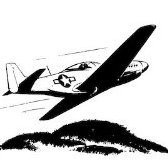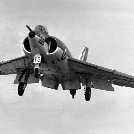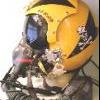-
Posts
25 -
Joined
-
Last visited
Contact Methods
-
Website URL
http://
-
ICQ
0
Profile Information
-
Gender
Male
-
Location
Chicago
Recent Profile Visitors
746 profile views
Tourist's Achievements

Newbie (1/9)
21
Reputation
-

1/72 P-51C "Evalina" & F-6C, Arma Hobby
Tourist replied to rom1's topic in Ready for Inspection - Aircraft
The Arma P-51Bs are little gems and your builds are out of this world! Beautiful Mustangs! -
Astounding! Your builds are out of this world, a pleasure to follow.
-

Revell 1/32 P-51D-5NA Mustang
Tourist replied to Nikola Topalov's topic in Work in Progress - Aircraft
What Dana means is that the aluminum parts weren't painted, they were actual aluminum with no finish. The RAF used to paint their Mustang's wheel bays (at least on the early Allisons) with an aluminum lacquer but that's about it. WWII USAAF Mustang had unpainted wheel bays which means natural aluminum with some primer applied to some parts according to the finish specs in order to limit corrosion. The later production blocks had more primed parts but still no painted wheel bays. A few photos show painted bays (one actually showing aluminum lacquer) but these were exceptions seen on individual planes. Post war the wheel bays were sometimes painted during reparations or overhauls. -

Revell 1/32 P-51D-5NA Mustang
Tourist replied to Nikola Topalov's topic in Work in Progress - Aircraft
Nice work on your build! A few days ago someone asked me about the finish in the wheel wells for the P-51D-10, since it's the same as the P-51D-5 here's what I answered: "P-51D-10-NAs like all the earlier production blocks had less anti corrosion protection than later blocks. - Main wheel wells. Based on photos I have seen the main spar had a coat of YZC, the "roof" was left aluminum with YZC stringers, the front spar was also left aluminum with only the most inner part (through which the coolant lines pass) finished in YZC. The ribs were left aluminum. Various braces on the YZC finished parts were finished with tinted (green) ZC. The separation wall between the wells was YZC with the small vertical braces being green ZC. - Engine. The bearers were interior green. The firewall could be interior green or YZC, the oil tank was YZC or left aluminum, the header tank was YZC or aluminum. The frame onto which the cowlings attach were left bare metal. -Tail wheel bay. Like the main wheel wells it was mostly left bare aluminum, the various braces were YZC. Feel free to play with these, there was no exact recipe and details changed all the time as long as the basic principles of (minimal) anti corrosion were followed." -

Differences Between P-51D/Ks and Mustang IVs?
Tourist replied to Over The Ponder's topic in Aircraft WWII
Radios were the same on P-51D/Ks and Mk.IVs. Only the harness was different and in some cases the louvered carb air intake doors and/or the gunsights. All the NAA built P-51D/Ks had a fuselage fuel cell. Only the CAC built Mk.20s (CA-17) had, originally, no fuselage fuel cells in order to accommodate the SCR-695 IFF set. I do not know how long this lasted (time to reread Southern Cross Mustangs) but pictures show that the CA-17s eventually got the fuselage fuel tanks. NAA and CAC quickly realized that it was possible to move the battery behind the engine, clearing the room for the IFF receiver, behind the radio, on top of the fuel tank. -
Superb build and finish! 👍
-
I saw that this thread was mentioned on another forum. It seems like a good time to update some of my previous comments: - The DFF was not added during production on P-51D-5-NA 44-13902 but appeared with the P-51D-10-NA block and was retrofitted to some D-5s. The straight DFF did not first start with the D-20 block but very late during the D-15 (and K-15) blocks, possibly the last 5 or 10 aircraft for each. - The armor plate was indeed mounted 2 1/4 inches lower before the P-51D-20 but the headrest cushion was not placed higher as I mentioned in 2011, the whole thing moved higher not allowing for the canopy to be fully opened. No decals on the front of the armor plate (on each sides of the seat) for the early, lower armor plate. On the early P-51D-5-NAs (possibly the first 250 ships) the top part of the armor plate was shorter allowing the cushion mounting plates to protrude on top, this gave the whole thing a rounder look. - While both seats were interchangeable and randomly installed, the Shick-Johnson seat seems to have first appeared during the P-51D-15-NA production and was probably the most common seat on the last blocks (D-25 and 30s). For those specifically interested in the P-51D-5 check the following thread out, it should give you pretty much all the info you need: https://www.tapatalk.com/groups/hyperscale/eduards-p-51d-5-with-fin-filet-what-differences-ar-t506831.html
-
No pics here! 😥
-
Merci pour le lien Olivier. J'ai passé un trés bel été a St. Raphael, il y a bien longtemps... Je suis un expat depuis 26 ans, NY puis Chicago.
-
Bravo Olivier! C'est un superbe montage, mené avec tenacité, virtuosité et modestie (un joli mélange). Tu mérites bien de profiter de l'été a St Raphael...
-

1/32 Revell (new tool) P-51D-5 Mustang
Tourist replied to Mattlow's topic in Work in Progress - Aircraft
I'm sure it will look fine with the belts on. BTW I was the one who wrote the bit about the wheel wells finish you posted on LSP. -

1/32 Revell (new tool) P-51D-5 Mustang
Tourist replied to Mattlow's topic in Work in Progress - Aircraft
Hi Matt, great start on your build! To be clear, the 2 stage curve variation is just a theory of mine and needs to be verified. There are very few period pictures showing the seat pan so I also look at surviving Mustangs and restorations (which are not always good sources for historical accuracy).








